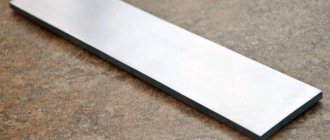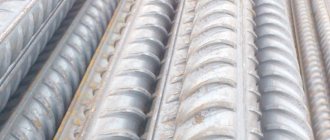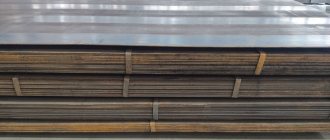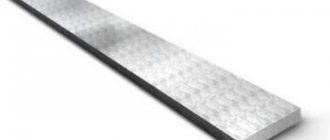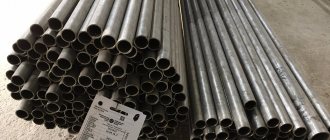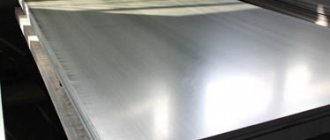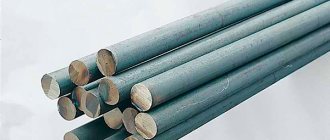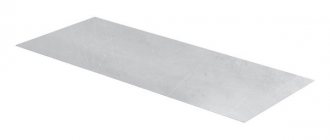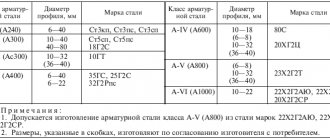Application
Steel 35X has a very specific, but great significance, since it is from this steel that the most important parts of various mechanisms are most often made, including shafts of internal combustion engines, gear transmissions of rotational motion, as well as axles and, in some cases, ring rails.
What unites all these items? At a minimum, quite a lot depends on their strength, which already tells us something about the capabilities of the steel from which, in fact, they are made. The above parts are most often subject to vibration. This means that the part must combine strength in order to perform its main function, but at the same time be sufficiently plastic and elastic so that under the influence of vibration it does not receive microcracks, which after a certain amount of time will lead to failure.
Steel processing methods 35
During the production of rolled metal parts, steel 35 is subjected to:
- normalization (annealing);
- hardening with low tempering;
- HDTV hardening.
The raw materials are forged at temperatures from 1280 °C to 750 °C with subsequent cooling, processed by cutting using the technology of optimal annealing, which increases the elastic limit of the alloy.
As for weldability, GOST classifies this possibility as limited. If steel 20 is welded without restrictions, with the exception of parts that have undergone chemical-thermal preparation, then steel grade 35 is “more demanding” - heating and special heat treatment are required. The main recommended welding methods are RDS, ESW, ADS submerged arc with gas protection.
Steel 35 (GOST 1050-88) undergoes hardening. Essentially, this is heating the alloy to a temperature above the critical one or, as it is also specified, the temperature of dissolution of excess phases. As a result, an unstable, metastable martensite structure is formed from the austenite structure. Thus, for steel 35, the hardening temperature ranges from 850 to 870 °C. After it was carried out, the hardness of the steel was 35 - 45 HRC. Tables of hardness of rolled products after processing are below:
| hardness HB, no more | |||
| for hot-rolled and forged steel | for calibrated rolled products and with special surface finishing | ||
| without heat treatment | after annealing or high tempering | hard-worked | annealed or highly tempered |
| 207 | — | 229 | 187 |
| hardness, HB, no more | temporary resistance | relative narrowing, %, not less | |
| after holiday or normal annealing | after spheroidizing annealing | ||
| hot-rolled and hot-rolled products with special surface finishing | calibrated and calibrated rolled products with special surface finishing | ||
| 163 | 187 - no more than 590(60) | no more than 540 (55) | 45 |
For this brand, low tempering hardening is recommended. This means that it is better to carry out processing at a temperature no higher than 160 - 200 oC. Under such conditions, the required reduction in quenching stresses occurs, martensite transforms into tempered martensite without a noticeable decrease in the hardness of steel 35, its strength increases, and toughness improves.
About the application of the alloy
Steel 35 (GOST 1050-88), characteristics and its main operational properties are invariably in demand by many construction companies and organizations, machine-building and machine-tool factories.
Metal structures, including reinforcing bars, shaped rolled products (rounds, hexagons st35), as well as shafts for various purposes, axles and cylinders, gears, connecting rods and disks, spindles and traverses - all this is produced from high-quality structural carbon steel grade 35.
It makes sense to note here that this medium-carbon alloy is rarely used in the manufacture of some large-sized parts and mechanisms, since the raw material is difficult to calcinate. In addition, there are losses in mechanical performance.
Types of delivery and GOST standards
The hardness and density of steel 35, its practicality and low cost are appreciated by many domestic consumers. Thanks to the existence of steel 35 with its characteristics, applications are still awaiting:
Shaped rolled products of proven factory quality, made in accordance with GOSTs 2590-2006 (hot-rolled steel circle Art. 35), 2879-2006, 2591-2006, 8509-93, 8240-97, 8510-86, 8239-89, 10702- 78.
- thick sheets (GOSTs 1577-93, 19903-74, 4041-71);
- thin sheets (GOST 16523-97);
- polished rod, silver (GOST 10702-78 and 14955-77);
- calibrated wheels (GOSTs 8560-78, 7417-75, 8559-75, 10702-78);
- stripes (GOSTs, 103-2006, 82-70,1577-93);
- tapes (GOST 2284-79);
- wire (GOST, 5663-79 and 17305-91);
- forgings, forged blanks according to GOSTs 8479-70 and 1133-71;
- pipes in accordance with GOSTs 8731-74, 8734-75, 8732-78 and 8733-74.
GOST
Now it’s worth finding out what 35X steel is actually called. According to regulatory documents, this is structural alloy chromium steel. And, thanks to the Soviet system of naming steel grades, we can even find out some of the ins and outs of this alloy grade. Eg:
- The designation “steel” makes us understand that the steel falls under the “Quality” category. This means that the amount of harmful impurities in 35X steel is lower than that of ordinary quality steel.
- The number 35 refers to the percentage of carbon in the alloy - on average 0.35 percent.
- The letter “X” at the end of the abbreviation tells us about the increased content of an alloying element such as chromium in the steel.
Chemical composition
Various chemical elements can change the performance characteristics of the resulting materials. Steel grade 35 is characterized by the following ratio of chemical elements:
- The main composition is iron. It is included in the composition of almost all alloys, in this case the concentration is about 97%.
- Hardness and other qualities are associated with carbon. In the case under consideration, the concentration of this chemical element ranges from 0.32 to 0.4%.
- The composition includes silicon, manganese and nickel. They determine the main operational characteristics. Nickel concentration is no more than 0.25%, manganese in the range from 0.5 to 0.8%. Silicon accounts for only 0.17-0.37% of the composition.
Steel sheet 140x500 mm steel 35
Harmful components are kept within a certain range, which allows for higher performance. Modern production technologies make it possible to improve the quality of the material.
Interpretation of steel: index 35 shows that the alloy contains 0.35% carbon, and the remaining elements make up an insignificant amount.
Ligature and characteristics
As in any other case, the characteristics of 35X steel are very dependent on the alloying elements included in its composition. It is they who endow steel with the basic properties necessary for certain conditions. For 35X, the composition of chemical additives is as follows:
- Carbon - significantly increases the strength and hardness of steel, reducing ductility - 0.35%.
- Silicon – slightly increases strength, without affecting the overall fragility – 0.22%.
- Manganese - adds strength to steel, resistance to impact loads, without reducing its ductility - 0.65%.
- Chromium – slightly increases the hardness of steel and protects it from corrosion by forming an oxide film – 0.95%.
- Copper also has a positive effect on the corrosion resistance of steel - up to 0.3%.
- Nickel - similarly increases oxidation resistance, as well as strength and flexibility - up to 0.3%.
We mentioned the so-called harmful impurities contained in 35X steel. Impurities such as sulfur and phosphorus have an unfavorable effect on the structure, and, as a consequence, on the quality of the resulting steel. However, their content is often negligible and in this case amounts to only 0.035% each.
Chemical composition, main characteristics
Already in the designation of steel 35 are the characteristics of the alloy. Simple digital information indicates, perhaps, the most important thing - the percentage of carbon with a small amount of impurities, which determines a number of properties demanded by the consumer.
Chemical elements are distributed in percentage as follows: Fe - approximately 97, C - 0.32-0.4, Si - 0.17-0.37, Mn - 0.5-0.8. Ni, Cr, Cu are 0.25 each, but P, S and As are 0.035, 0.040 and 0.08, respectively.
Steel 35, its characteristics, are determined by its belonging to the class of medium-carbon alloys, which also includes steel grades 30, 40, 45 and 50. The raw materials are distinguished by high strength properties, while having neither the ductility nor the toughness of low-alloy steels, which, however, is not required. Mechanical properties are described in detail in the tables of GOST 1050-88
| Mechanical properties, no less | ||||
| Yield strength, N/mm2 (kgf/mm2) | Tensile strength, N/mm2 (kgf/mm2) | Impact strength KCU, J/cm2 (kgf * m/cm2) | Relative extension | Relative narrowing |
| % | ||||
| 315(32) | 530(54) | 69(7) | 20 | 45 |
Analogs
We are sure that you will not be surprised to learn that analogues of the 35X steel grade are widely used in many countries around the world and are produced by local metallurgical plants, but they have completely different names. This, by the way, is also not at all surprising. After all, the system for naming steel grades may differ in different countries. That is why it is important to familiarize yourself with at least a couple of foreign names and, if possible, remember them. You never know, it will come in handy.
Here's a short list just for you:
- United States of America - 5132 or 5135
- European Union – 1.7033 or 34Cr4
- China – 35Cr
- Japan – SCr430 or SCr435
Now, having this list in your head, you can accurately determine the grade of steel similar to 35X. Whether this will be useful to you is another question that you must answer yourself.
Main characteristics
The main characteristics largely determine the scope of application of the metal. Steel 35 is characterized by the following qualities:
- The density of Steel 35 is 7826 kg/m3 at a temperature of 20 degrees Celsius. It is worth considering that the indicator decreases with increasing temperature. A serious increase in temperature leads to a restructuring of the structure, it becomes more plastic. The density indicator is taken into account when carrying out various calculations. For example, it is necessary to calculate the pressure exerted on supporting structures.
- When choosing a metal, attention is paid to the hardness indicator. In the case under consideration, the hardness is 163 MPa. M35 steel can be subjected to various heat treatments, which are aimed at increasing the hardness of the surface layer. Normalization technology is often used as a heat treatment, which makes the structure more uniform and resistant to high loads.
- The degree of weldability is limited. That is why it is recommended to preheat the workpiece. By heating the structure, it became possible to use various welding technologies. To improve the quality of the resulting seam, additional heat treatment is carried out after welding.
- The structure is not prone to temper brittleness. During heat treatment, tempering is performed, which reduces internal stresses. Too high fragility means that structural cracks may appear during impact or other dynamic loads.
- The material is being cut. This property determines that the material is often supplied to machine-building plants where a large amount of turning and milling equipment is installed. The supplied workpieces can be processed using conventional cutters. The quality and speed of processing can be significantly improved by using cutters with carbide inserts.
Mechanical properties st 35
The metal in question can be forged at a temperature of 1280 degrees Celsius. Cooling can be carried out using oil or in the open air, the choice is made depending on the size of the workpiece.
